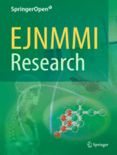
EJNMMI Research
Scope & Guideline
Fostering Global Collaboration for Scientific Discovery.
Introduction
Aims and Scopes
- Molecular Imaging Techniques:
The journal emphasizes innovative imaging modalities, including positron emission tomography (PET), single-photon emission computed tomography (SPECT), and hybrid imaging techniques, which are crucial for diagnosing and monitoring diseases. - Radiopharmaceutical Development:
A significant focus is on the development and validation of new radiopharmaceuticals for both diagnostic and therapeutic applications, with an aim to improve imaging accuracy and patient outcomes. - Clinical Applications and Trials:
EJNMMI Research publishes studies that explore the clinical applications of imaging technologies, including their role in oncology, neurology, cardiology, and other fields, as well as the results from clinical trials. - Quantitative Imaging and Dosimetry:
The journal covers advances in quantitative imaging methodologies and dosimetry, which are essential for optimizing treatment plans in personalized medicine. - Theranostics:
The integration of diagnostics and therapeutics, or theranostics, is a key area of research, focusing on the use of imaging to guide targeted therapies. - Artificial Intelligence and Imaging:
There is a growing interest in the application of artificial intelligence and machine learning techniques to enhance imaging analysis and interpretation, which is a significant trend within the journal.
Trending and Emerging
- Artificial Intelligence in Imaging:
The application of AI and machine learning for image reconstruction, analysis, and interpretation is rapidly gaining traction, as these technologies enhance diagnostic accuracy and efficiency. - Radiomics and Imaging Biomarkers:
The exploration of radiomics, which involves extracting a large number of features from medical images, is trending as a method for improving diagnosis and predicting treatment outcomes. - Personalized Medicine:
There is an increasing emphasis on personalized approaches in nuclear medicine, particularly in the context of cancer therapies that are tailored based on individual patient imaging and genetic profiles. - Theranostic Approaches:
The integration of diagnostic and therapeutic strategies, particularly using radioligands for targeted therapy, is emerging as a significant theme, reflecting the trend toward personalized treatment plans. - Hybrid Imaging Technologies:
The continued development and application of hybrid imaging technologies, such as PET/MRI and PET/CT, are trending, allowing for comprehensive assessments of complex diseases. - Immuno-PET Techniques:
The use of immuno-PET for evaluating immune responses and targeting specific biomarkers is gaining popularity, reflecting a broader interest in immunotherapy and its monitoring.
Declining or Waning
- Traditional Imaging Techniques:
There has been a noticeable decrease in publications focused exclusively on traditional imaging methods without the integration of newer technologies or advanced imaging analysis techniques. - Invasive Imaging Procedures:
Research papers emphasizing invasive imaging procedures are becoming less common as non-invasive techniques gain favor for their lower risk and improved patient comfort. - Basic Science Studies:
There has been a waning interest in purely basic science studies that do not translate directly to clinical applications, as the journal increasingly prioritizes translational research. - Non-targeted Imaging Agents:
The focus on non-specific or non-targeted imaging agents is decreasing, with a shift towards more personalized and targeted approaches in imaging.
Similar Journals

Nuclear Medicine and Molecular Imaging
Pioneering Discoveries in Molecular Imaging TechniquesNuclear Medicine and Molecular Imaging, published by SPRINGER HEIDELBERG, stands as a pivotal platform in the interdisciplinary field of radiology and nuclear medicine, focusing on innovative research and developments from 2010 to 2024. With its ISSN 1869-3474 and E-ISSN 1869-3482, this journal aims to disseminate advanced studies that explore the diagnostic and therapeutic applications of nuclear medicine technologies. Operating from Germany, it has positioned itself in the Q3 category within the Radiology, Nuclear Medicine and Imaging sector, showcasing its relevance among peer journals, with a Scopus rank of #204 out of 333. This journal not only serves as an essential resource for researchers and practitioners eager to stay abreast of modern methodologies and findings but also underscores the crucial advancements in molecular imaging techniques. Although currently not an open-access journal, it doesn't detract from its mission to promote knowledge exchange among academia and the medical community, thus paving the way for innovative solutions and improved patient care in nuclear medicine.
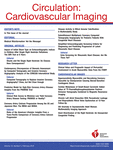
Circulation-Cardiovascular Imaging
Exploring the intersection of cardiology and innovative imaging.Circulation-Cardiovascular Imaging is a prestigious journal published by LIPPINCOTT WILLIAMS & WILKINS, dedicated to advancing the field of cardiovascular imaging through high-quality research and review articles. With an impact factor placing it in the Q1 category across key areas including Cardiology and Cardiovascular Medicine, Medicine (miscellaneous), and Radiology, Nuclear Medicine and Imaging, this journal fosters scholarly communication among leading experts and emerging researchers. Established in 2008, it has rapidly become an essential resource for academics and professionals, given its commitment to disseminating groundbreaking findings and methodologies that influence clinical practices and patient outcomes. Circulation-Cardiovascular Imaging is designed to engage a wide audience, from seasoned practitioners to students keen on exploring the nexus of cardiology and innovative imaging techniques. Its significant visibility in the medical literature underscores its role as a cornerstone in the evolution of cardiovascular diagnostics and patient care.

ROFO-FORTSCHRITTE AUF DEM GEBIET DER RONTGENSTRAHLEN UND DER BILDGEBENDEN VERFAHREN
Advancing the Frontiers of Radiological ScienceROFO-Fortschritte auf dem Gebiet der Röntgenstrahlen und der bildgebenden Verfahren, published by Georg Thieme Verlag KG, is a pivotal journal in the fields of radiology and nuclear medicine, offering invaluable insights for researchers, healthcare professionals, and students alike. With an ISSN of 1438-9029, this journal has been a stalwart of scientific communication since its inception in 1975, actively contributing to advancements in imaging techniques and radiation therapy. Although it operates under traditional access, the journal maintains a respectable standing, reflected by its Q3 ranking in Radiology, Nuclear Medicine and Imaging and Q4 in Medicine (miscellaneous), highlighting its significance in the scholarly community. Its coverage spans a wide array of topics pertinent to diagnostic imaging and therapy protocols, making it an essential resource for anyone seeking to understand the complexities of modern radiological practices. As the journal continues to evolve through 2024, it invites contributions that enrich the dialogue around technological innovations and clinical applications in the realm of imaging modalities.
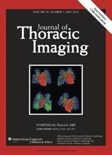
JOURNAL OF THORACIC IMAGING
Pioneering Discoveries in Thoracic HealthThe JOURNAL OF THORACIC IMAGING, published by Lippincott Williams & Wilkins, stands as a pivotal resource in the fields of Pulmonary and Respiratory Medicine as well as Radiology, Nuclear Medicine, and Imaging. With the ISSN 0883-5993 and E-ISSN 1536-0237, this esteemed journal has been providing critical insights and advancements since its inception in 1985, contributing significantly to the ongoing dialogue and research within these disciplines. The journal maintains a commendable position, ranking in the Q2 category in both relevant fields and achieving an impressive Scopus ranking of #46 out of 333 in Radiology and #30 out of 155 in Pulmonary Medicine, showcasing its influence and impact (with particles in the 86th and 80th percentiles, respectively). While the journal is not open access, it continues to disseminate high-quality research that informs clinical best practices and emerging technologies in thoracic imaging. As a leading publication, it serves as an essential tool for researchers, clinicians, and students seeking to stay at the forefront of thoracic health innovations.

Revista Espanola de Medicina Nuclear e Imagen Molecular
Pioneering Insights in Radiology and Molecular ImagingRevista Española de Medicina Nuclear e Imagen Molecular, published by Elsevier España SLU, stands as a vital resource in the field of Radiology, Nuclear Medicine, and Molecular Imaging. With an ISSN of 2253-654X, this journal is committed to disseminating high-quality research and advancements in clinical practices, aiming to bridge the gap between theoretical research and application in healthcare. Operating since 2012, it features a robust archive of peer-reviewed articles and case studies, although it currently holds a Q4 ranking in the Scopus category, indicating significant potential for growth and influence within the academic community. The journal is indexed in Scopus, with a rank of 255 out of 333, placing it in the 23rd percentile, which underlines the need for increased contributions from researchers eager to enhance its standing. While it is not an open-access journal, its availability through libraries and institutions ensures that a wide audience can access critical findings and innovations in the rapidly evolving field of nuclear medicine. As we look towards the convergence period from 2012 to 2024, Revista Española de Medicina Nuclear e Imagen Molecular aspires to fortify its role as a cornerstone for collaboration and advancement in nuclear imaging and radiology.

Journal of X-Ray Science and Technology
Driving Excellence in Radiological ResearchThe Journal of X-Ray Science and Technology, published by IOS PRESS, serves as a premier platform for researchers and professionals dedicated to advancements in the fields related to X-ray science, imaging techniques, and instrumentation. With an ISSN of 0895-3996 and an E-ISSN of 1095-9114, this journal has established itself as a vital resource since its inception in 1989. The journal has transitioned through multiple publishing phases, currently converging its years of publication from 2001 to 2024, thereby enriching the scientific community’s understanding across various categories, notably in the second quartile (Q2) of Condensed Matter Physics, Electrical and Electronic Engineering, Instrumentation, Radiation, and Radiology, Nuclear Medicine and Imaging as of 2023.
In addition to its commendable Scopus rankings—which highlight its relevance and impact within the medical and physical sciences—the journal emphasizes the dissemination of impactful research, innovative techniques, and collaborative efforts within the X-ray scientific community. Despite being a subscription-based journal, its contributions are crucial for those aiming to stay at the forefront of research and technological development in these rapidly evolving fields.
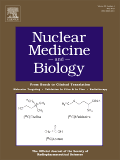
NUCLEAR MEDICINE AND BIOLOGY
Pioneering research at the intersection of medicine and biology.NUCLEAR MEDICINE AND BIOLOGY, published by Elsevier Science Inc, is a premier journal dedicated to advancing the fields of nuclear medicine and molecular biology. Since its inception in 1986, this journal has served as a vital platform for the dissemination of high-quality research, with a clear focus on the innovative applications of nuclear techniques in biological settings. It is categorized in the Q3 tier for both Cancer Research and Molecular Medicine, and Q2 for Radiology, Nuclear Medicine and Imaging, highlighting its significant standing within these disciplines. The journal's Scopus rankings reflect its strong impact, placing it in the top quartile of its categories, particularly in Radiology, Nuclear Medicine, and Imaging. Researchers, professionals, and students alike will find this an invaluable resource for contemporary research findings and methodologies in nuclear medicine and its biological applications. Access to the journal is provided through subscription, ensuring that quality content remains available to its wide-ranging audience.

Current Cardiovascular Imaging Reports
Driving Progress in Cardiovascular Imaging and DiagnosticsCurrent Cardiovascular Imaging Reports, published by SPRINGER, is a notable academic journal within the field of cardiovascular imaging. With its ISSN 1941-9066 and E-ISSN 1941-9074, this journal has been a critical resource since its inception in 2008, aiming to disseminate high-quality research and reviews in the realm of cardiovascular diagnostics and imaging technologies. Though currently categorized within the Q3 and Q4 quartiles for various fields such as Applied Microbiology and Biotechnology, Histology, and Cell Biology, its impact and relevance are growing steadily. Researchers and practitioners can benefit from the insights presented in this journal, especially as it covers advancements and practical applications in cardiovascular imaging techniques crucial for enhancing patient care. Given its ongoing commitment to open access, although not currently available, readers can engage with significant research findings that may inform future studies and applications in cardiology. With plans to converge towards 2024, this journal is poised to facilitate the exchange of knowledge and foster innovation within its dynamic field.
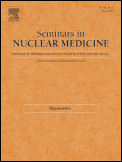
SEMINARS IN NUCLEAR MEDICINE
Leading the way in radiology advancements.Welcome to Seminars in Nuclear Medicine, a prestigious journal published by W B Saunders Co-Elsevier Inc that has been at the forefront of the field since its inception in 1971. This journal serves as a dedicated forum for researchers, healthcare professionals, and students specializing in the rapidly evolving areas of radiology and nuclear medicine. With an impressive ranking of #29 out of 333 in the Scopus category, drawing an esteemed 91st percentile, it holds a distinguished Q1 category status, highlighting its critical role in disseminating high-quality research and clinical practices. Although it does not operate as an Open Access publication, Seminars in Nuclear Medicine remains a vital resource, featuring comprehensive reviews and insightful articles that inform the medical community about the latest advancements and applications within nuclear imaging. This journal not only enhances knowledge but also encourages collaboration among professionals dedicated to improving patient outcomes through innovative nuclear medicine techniques.

Hellenic Journal of Nuclear Medicine
Elevating Standards in Nuclear Medicine ResearchThe Hellenic Journal of Nuclear Medicine, published by the Hellenic Society of Nuclear Medicine, serves as a pivotal platform for researchers, professionals, and students in the fields of nuclear medicine, radiology, and imaging. Based in Greece and established as a prominent forum since 2004, this journal is dedicated to advancing the understanding and application of nuclear medicine through high-quality original research, reviews, and clinical studies. With an ISSN of 1108-1430 and an E-ISSN of 1790-5427, it has garnered attention within its community, holding a Q3 ranking in the 2023 category of Medicine (miscellaneous) and Radiology, Nuclear Medicine, and Imaging. Despite its current Scopus ranking of #235/333 in the respective fields, the journal is increasingly recognized for its potential to contribute impactful knowledge and innovations. Researchers are encouraged to utilize its resources to enhance their work and contribute to the growing body of knowledge in nuclear medicine. Notably, the journal maintains a commitment to accessible scholarly communication, fostering collaboration among experts across the globe.